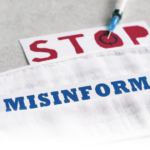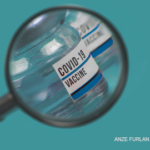Dr. Parry and her colleagues have studied the immune response to the Pfizer and the AstraZeneca vaccines. Public Health England decided early in its vaccination program to extend the interval between the first and second vaccine to accelerate the number of people immunized with at least one vaccine. Because of this, researchers have also been able to study how delayed vaccination schedules have affected immune response in elderly individuals.
In three studies, Dr. Parry and colleagues collected data from people 80 years and older who were living independently. Potential medical conditions and medications were not specified. In one study that included 76 participants who had received one dose of the Pfizer vaccine, the team found that 93% had a detectable COVID-19 antibody response five weeks after vaccination.1 Another study looked at 100 participants who had received a second dose on a standard schedule, three weeks after the first dose. All showed antibody responses two weeks after their second Pfizer vaccine, and 98% had high titers.2
Potential Benefit from Delayed Vaccination Schedule
In a third study, Dr. Parry and colleagues contrasted the results from 172 participants who had received the second dose of their Pfizer mRNA vaccine at a standard three-week interval or on an extended dosing schedule (11–12 weeks later).3
In analyses performed at two to three weeks after their second vaccine dose, 100% of participants displayed a protective antibody response. However, in terms of the specific antibody titers, participants who received the vaccines on the extended schedule had a 3.5-fold increase in magnitude.3
“We were absolutely delighted with the titers we were getting back [in the standard interval group]. Then, to get this extended vaccination even higher still—we really couldn’t believe it,” Dr. Parry says.
The picture was nuanced. Participants who received their second dose at a later interval had a diminished T cell immune response in terms of the number of T cells producing interferon γ. The significance of this remains unclear. Dr. Parry notes that much of the research on finding a potential correlate of protection—a lab value that entails protection against future infection—has focused on antibodies instead of cellular responses, partly because they are easier to study.
Dr. Parry points out that in the context of previously developed vaccines against other pathogens, a three-week interval between a first and second vaccine dose is relatively short. “What you are trying to do with that second vaccine,” she explains, “is stimulate memory B cells that you’ve made from your first vaccine. That takes time, because you have to generate the memory B cells. When you go in with your second vaccine, you really want your memory B cell pool to be primed and ready to go.”



